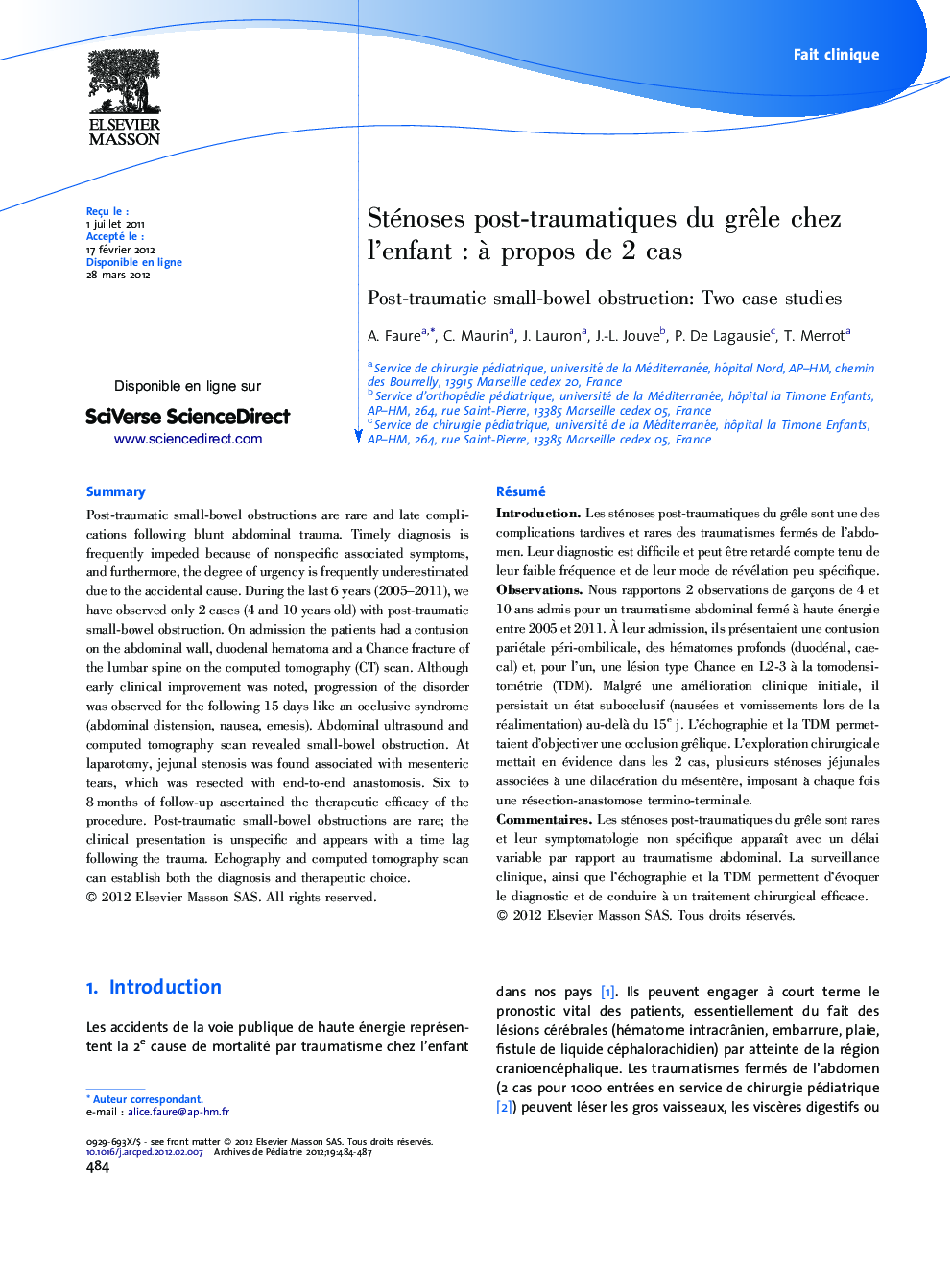| Article ID | Journal | Published Year | Pages | File Type |
|---|---|---|---|---|
| 4147682 | Archives de Pédiatrie | 2012 | 4 Pages |
RésuméIntroductionLes sténoses post-traumatiques du grêle sont une des complications tardives et rares des traumatismes fermés de l’abdomen. Leur diagnostic est difficile et peut être retardé compte tenu de leur faible fréquence et de leur mode de révélation peu spécifique.ObservationsNous rapportons 2 observations de garçons de 4 et 10 ans admis pour un traumatisme abdominal fermé à haute énergie entre 2005 et 2011. À leur admission, ils présentaient une contusion pariétale péri-ombilicale, des hématomes profonds (duodénal, caecal) et, pour l’un, une lésion type Chance en L2-3 à la tomodensitométrie (TDM). Malgré une amélioration clinique initiale, il persistait un état subocclusif (nausées et vomissements lors de la réalimentation) au-delà du 15e j. L’échographie et la TDM permettaient d’objectiver une occlusion grêlique. L’exploration chirurgicale mettait en évidence dans les 2 cas, plusieurs sténoses jéjunales associées à une dilacération du mésentère, imposant à chaque fois une résection-anastomose termino-terminale.CommentairesLes sténoses post-traumatiques du grêle sont rares et leur symptomatologie non spécifique apparaît avec un délai variable par rapport au traumatisme abdominal. La surveillance clinique, ainsi que l’échographie et la TDM permettent d’évoquer le diagnostic et de conduire à un traitement chirurgical efficace.
SummaryPost-traumatic small-bowel obstructions are rare and late complications following blunt abdominal trauma. Timely diagnosis is frequently impeded because of nonspecific associated symptoms, and furthermore, the degree of urgency is frequently underestimated due to the accidental cause. During the last 6 years (2005–2011), we have observed only 2 cases (4 and 10 years old) with post-traumatic small-bowel obstruction. On admission the patients had a contusion on the abdominal wall, duodenal hematoma and a Chance fracture of the lumbar spine on the computed tomography (CT) scan. Although early clinical improvement was noted, progression of the disorder was observed for the following 15 days like an occlusive syndrome (abdominal distension, nausea, emesis). Abdominal ultrasound and computed tomography scan revealed small-bowel obstruction. At laparotomy, jejunal stenosis was found associated with mesenteric tears, which was resected with end-to-end anastomosis. Six to 8 months of follow-up ascertained the therapeutic efficacy of the procedure. Post-traumatic small-bowel obstructions are rare; the clinical presentation is unspecific and appears with a time lag following the trauma. Echography and computed tomography scan can establish both the diagnosis and therapeutic choice.
